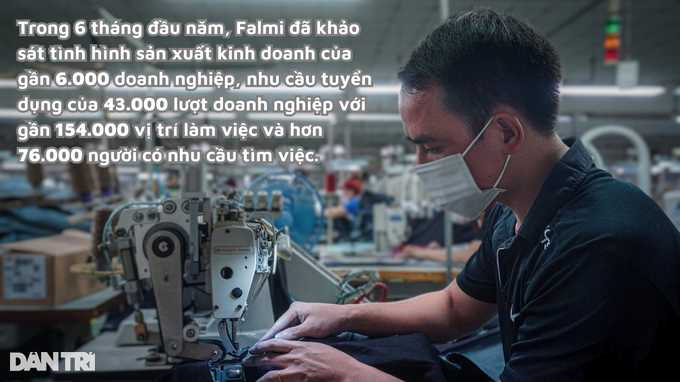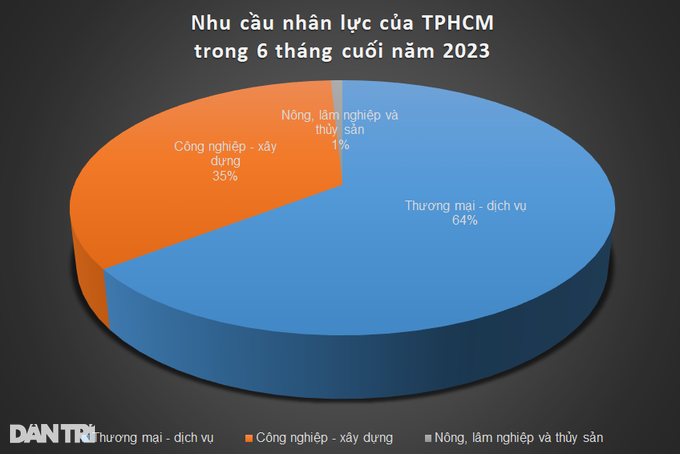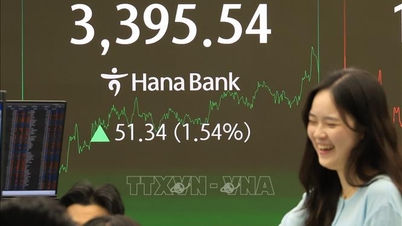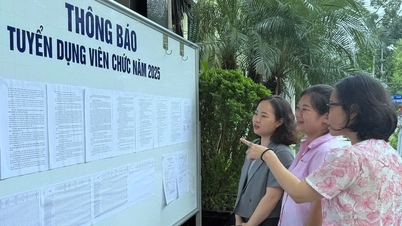The labor market is brightening
In the first 6 months of the year, the Center for Human Resources Demand Forecasting and Labor Market Information of Ho Chi Minh City (Falmi, under the Department of Labor - Invalids and Social Affairs of the city) conducted a survey on the production and business situation of nearly 6,000 enterprises, the recruitment needs of 43,000 enterprises with nearly 154,000 job positions and more than 76,000 people looking for jobs.
From the results of the above surveys, Ms. Nguyen Hoang Hieu, Director of Falmi, commented: "In the first 6 months of the year, the city's labor market had many fluctuations under the impact of the domestic and world economy , the recovery speed of businesses was still slow".

According to Falmi, many businesses, after a period of responding to the Covid-19 pandemic, still have financial resources to organize and rearrange production activities to meet changes in standards, tastes and new customer requirements for goods.
In recent times, the city has also taken many proactive measures to support businesses in recovering and developing production and business such as attracting investment, reducing interest rates, supporting tax reduction, supporting workers in finding new jobs, supporting training to improve vocational skills for workers... Thanks to that, the picture of the labor market is gradually brightening along with the economic recovery.
However, Falmi assessed that the city's economy continues to face many unpredictable challenges as the real estate market still faces many difficulties, import and export activities have increased but are still slow, and the number of orders has not yet completely recovered to pre-pandemic levels...
Assessing the general labor market in the first 6 months of the year, Ms. Nguyen Hoang Hieu said: "The labor and employment situation continues to fluctuate, labor cuts still occur, especially in the textile and footwear industries, electronic components manufacturing and assembly, wood processing, etc."
Two scenarios for the labor market
Based on the market developments in the first 6 months of the year, Falmi forecasts that the demand for human resources in the last 6 months of the year will develop according to two scenarios.
In the first scenario, global economic growth and that of some major economies tend to slow down, affecting the Vietnamese economy, leading to a slowdown in the export growth rate of processed and manufactured industrial products in the short term when global demand weakens.
At that time, Falmi forecasted that in the last 6 months, the city would need 145,000-155,000 people for human resources.
In the second scenario, global economic growth moves in a positive direction, Vietnam's economic situation shows many positive signs, businesses in the City have the opportunity to increase export orders and expand production.
At that time, the demand for labor increased, creating conditions for stable income for workers and Falmi forecasted the demand for human resources in the last 6 months of the year to be about 155,000-165,000 people.
According to Falmi, although the number of human resources changes according to different scenarios, recruitment needs still focus on 4 key industries and 9 main service industries.
Specifically, the city's human resource demand is still concentrated in the trade - service sector (accounting for 64.57% of total human resource demand), followed by the industrial - construction sector (accounting for 34.62%) and the agricultural, forestry and fishery sector accounts for only 0.81%.

In the trade and service sector, the human resource demand of 9 main service sectors accounts for 54.77% of the total human resource demand. Some sectors with high recruitment rates are trade (18.41%); transportation, warehousing, port services - maritime logistics and import-export (4.22%); tourism (4.67%); finance - credit - banking - insurance (6.19%); property - real estate business (7.96%)...
In the industrial - construction sector, the human resource demand of 4 key industries accounts for 21.97% of the total human resource demand. Of which, the mechanical industry accounts for 6.11%; electronics - information technology accounts for 7.2%; food processing accounts for 4.02%; and pharmaceuticals - rubber accounts for 4.64%.
Source link



![[Photo] Binh Trieu 1 Bridge has been completed, raised by 1.1m, and will open to traffic at the end of November.](https://vphoto.vietnam.vn/thumb/1200x675/vietnam/resource/IMAGE/2025/10/2/a6549e2a3b5848a1ba76a1ded6141fae)




































































































Comment (0)